Quiz: Ontario Traffic Rules 3
It should be your aim to pass with flying colors keeping in view the fact that you are aware of all the rules of driving, and thus, you could be a better and safe driver. Also, the best thing to help you would be a practice test and you can practice and match answers to see where you stand!
ADVERTISEMENT
ADVERTISEMENT
The hand-and-arm signal for slowing or stopping is indicated by:
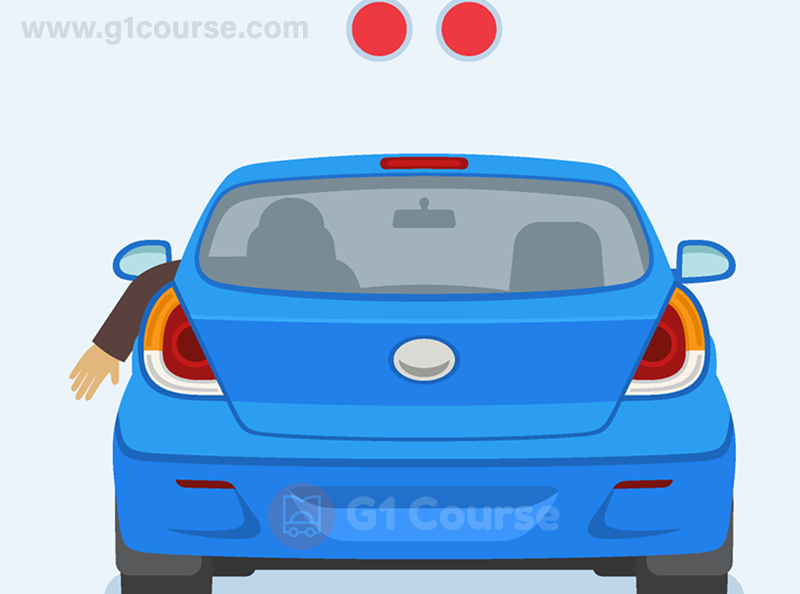
Arm out and down
Arm out and up
Arm straight out the window
Circular motion of the arm
Correct!
Wrong!
When parked facing downhill:
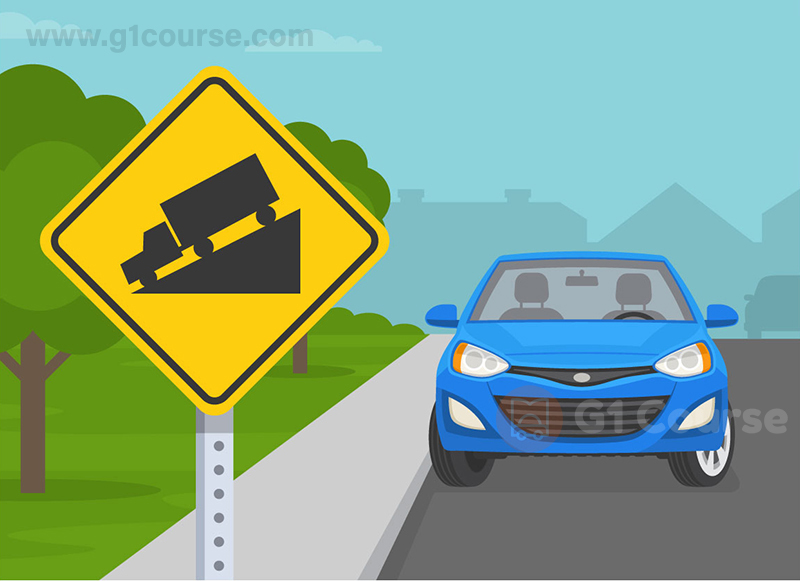
The front wheels must be turned towards the curb or right shoulder
The front wheels must be parallel to the curb
The front wheels must be turned to the left and the parking brake must be set
The direction of the wheels doesn’t matter as long as the parking brake must be set
Correct!
Wrong!
What should you do if your vehicle becomes disabled on a 400-series Highway?
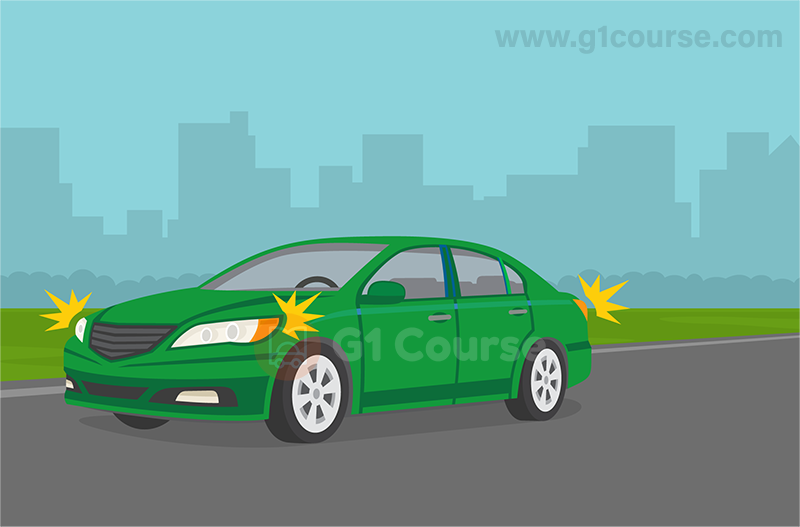
Pull over, turn on the emergency flashers and wait for help
Get out and walk to get help
Get out and try to wave highway traffic around the vehicle
Honk the horn in order to signal for help
Correct!
Wrong!
Rules for both G1 & G2 license holders include:
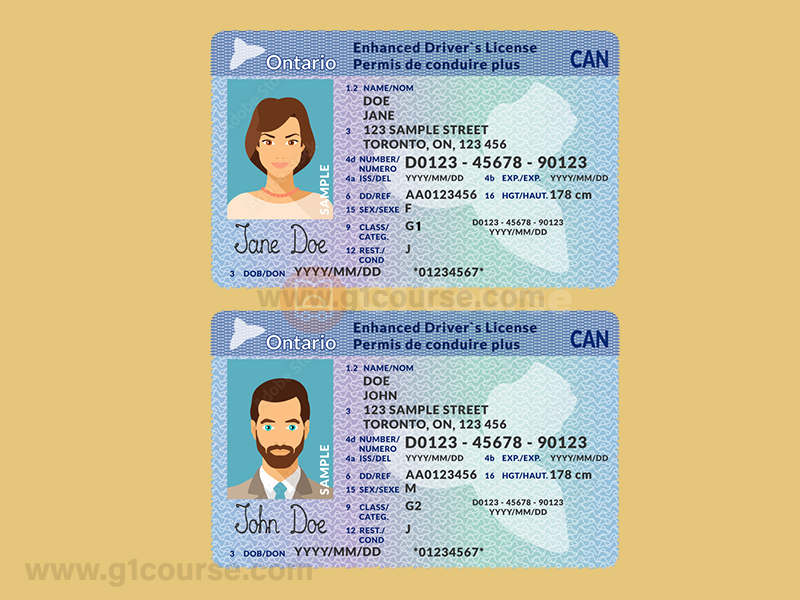
All of these
Drivers must not operate a motor vehicle if they have been drinking alcohol
Drivers’ blood alcohol must be zero
Each person in the vehicle must wear a seat belt
Correct!
Wrong!
When another vehicle attempts to pass:
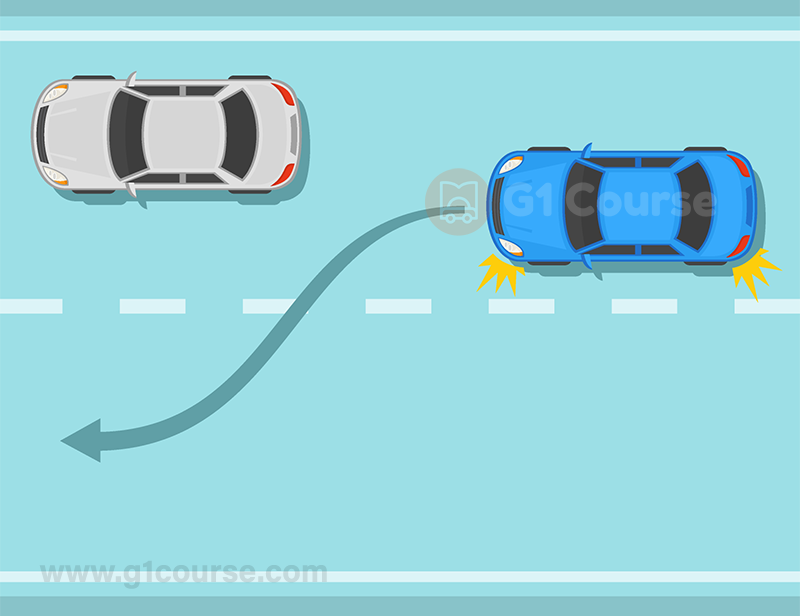
Drivers should move to the right and let it pass
Drivers should accelerate so that passing is not necessary
Drivers should tap their brakes to tell the other driver not to pass
Drivers should move to the left to prevent passing
Correct!
Wrong!
What is a good, safe driving practice when descending a steep hill in a vehicle?
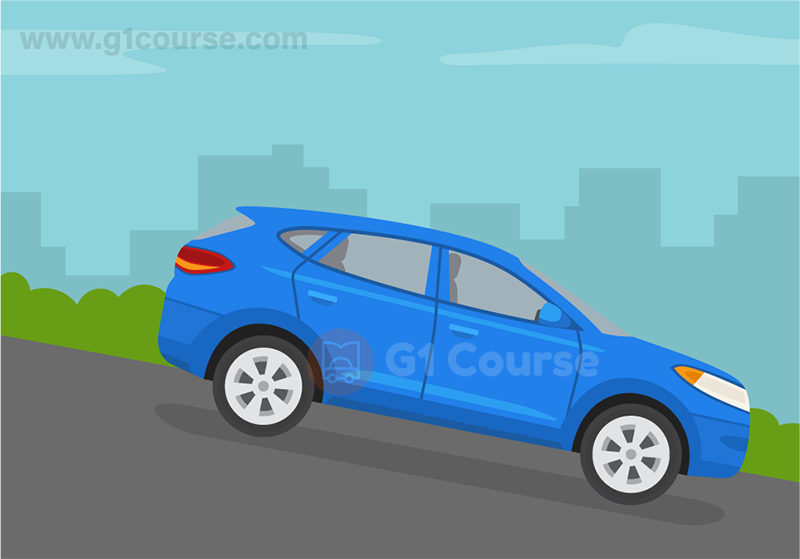
Gear down, using the motor to assist in braking
Turn off the ignition
Place the vehicle into neutral
Engage the clutch and coast
Correct!
Wrong!
Before moving your car from a parked position, you should…?
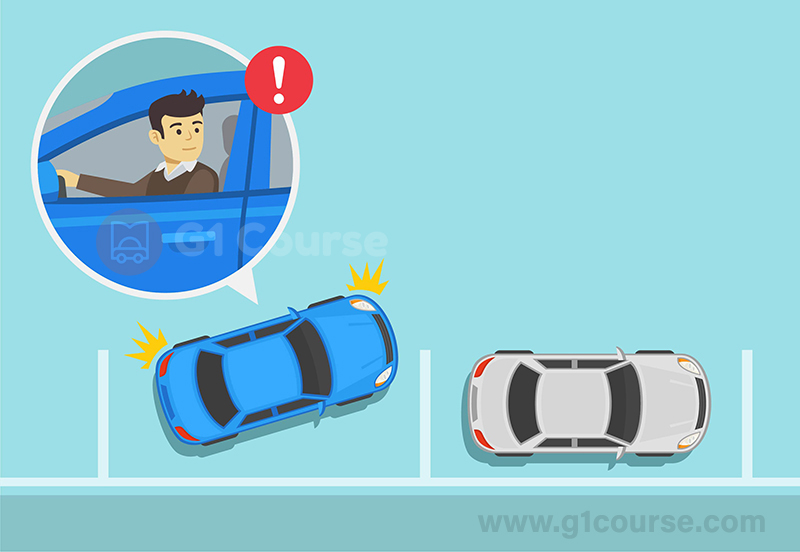
Always signal and check mirrors and blind spot for traffic; enter the live lane of traffic only when it is safe to do so
Check for other traffic and slowly enter the live lane of traffic
Honk loudly and quickly enter the live lane of traffic
Signal and enter the live lane of traffic
Correct!
Wrong!
When is it permissible to use only the parking lights on a vehicle?
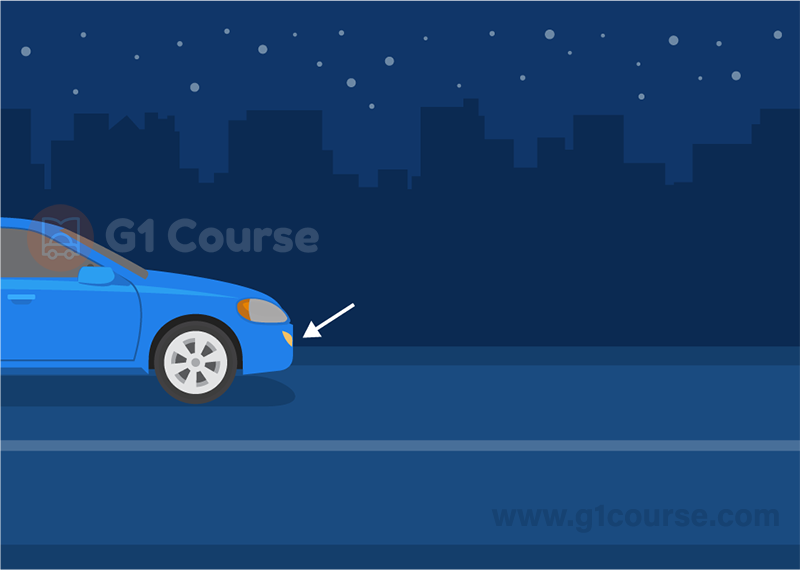
Only when parked
At any time
When driving in heavy fog
When driving on a well-lit street
Correct!
Wrong!
What should drivers do when exiting a freeway?
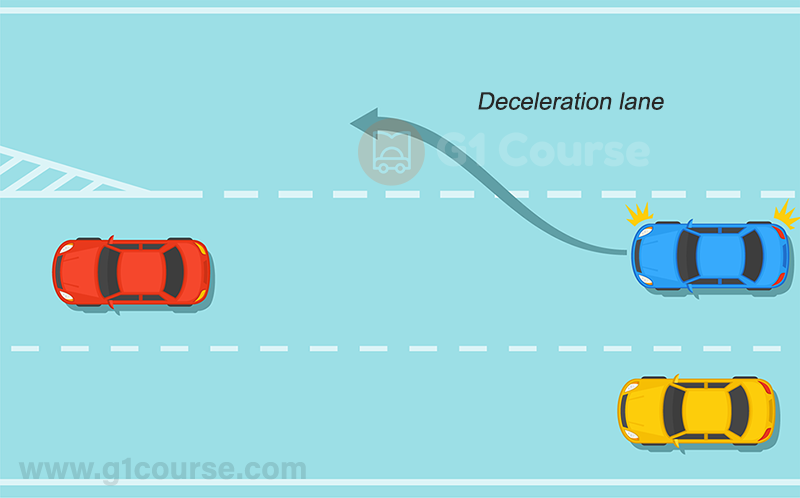
Signal, move into the deceleration lane, reduce speed gradually and obey exit signs
Do what the vehicle ahead does
Signal, then stop to wait for an opening in traffic
Signal and accelerate while merging smoothly into the exit lane
Correct!
Wrong!
Unless otherwise posted, the maximum speed limit allowed on a highway outside a city, town, village, or built-up area is:
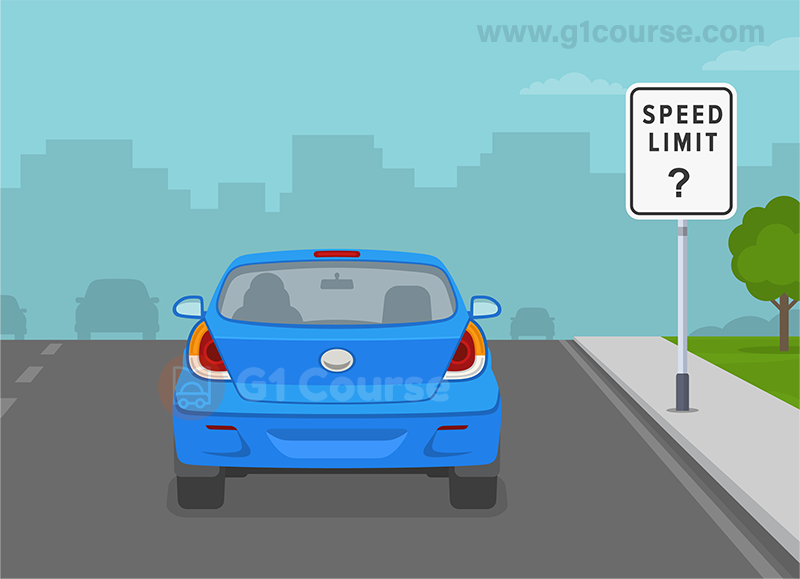
80 km/h
50 km/h
100 km/h
60 km/h
Correct!
Wrong!
When deciding to make a U-turn, drivers must first observe:
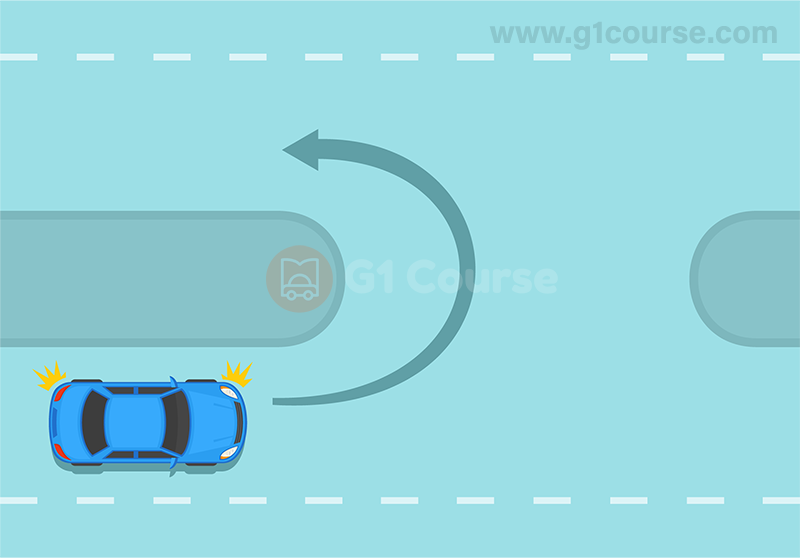
Posted traffic regulations
Weather conditions
The turning radius of the road
The height of the curbs at the sides of the road
Correct!
Wrong!
It is more dangerous to drive at the maximum speed limit at night than during the day because:
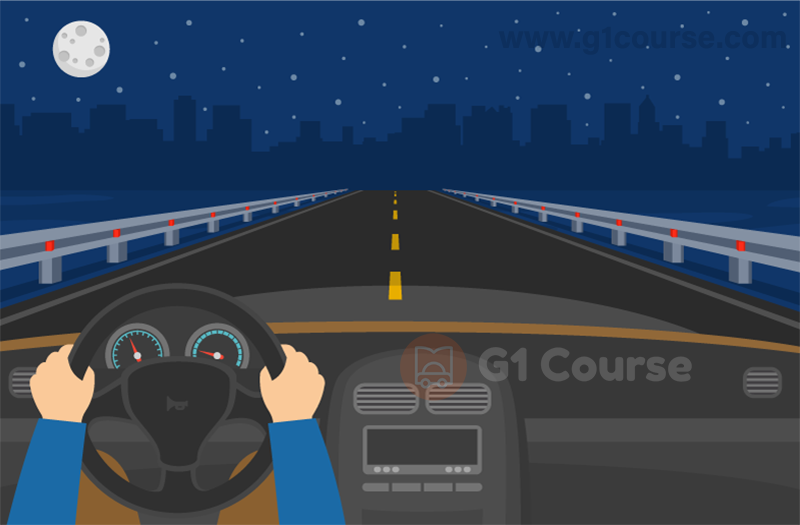
Drivers cannot see as far ahead, even with headlights
Some drivers unlawfully drive with parking lights only
The roadways are more apt to be slippery at night
Drivers’ reaction time is slower at night
Correct!
Wrong!
What must drivers do before entering a highway from a private road or driveway?
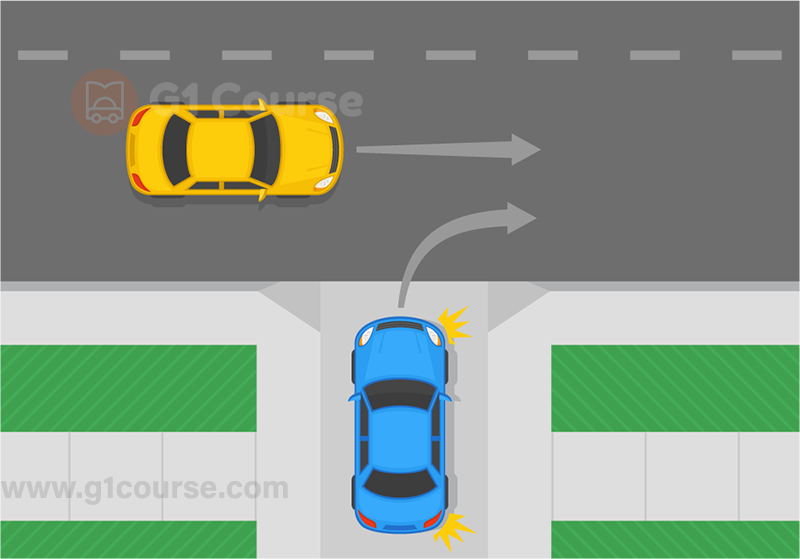
Yield right-of-way to all vehicles approaching on the highway
Honk loudly and proceed with caution
Enter or cross the highway as quickly as possible
Make the appropriate hand signal then take the right-of-way
Correct!
Wrong!
A broken line to the left of a lane means:
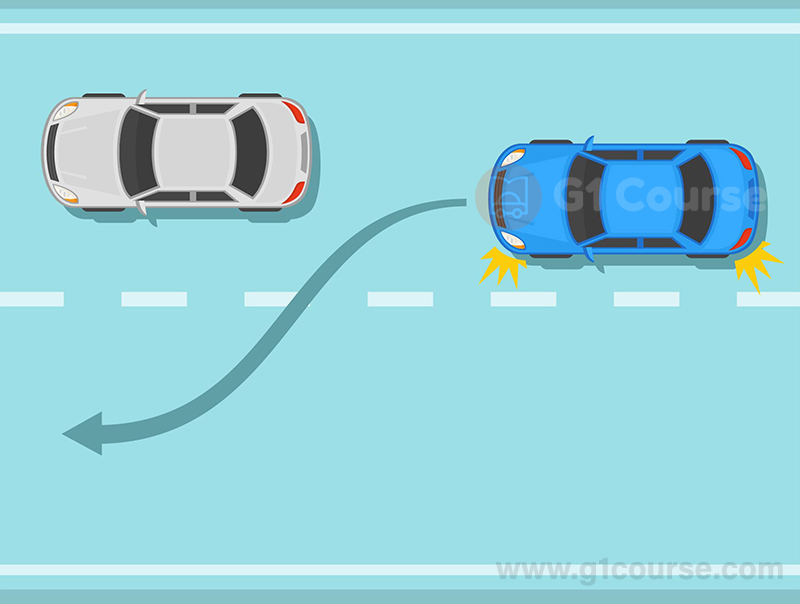
Drivers may pass if the way is clear
Drivers must not pass
Drivers may pass at any time
Drivers may pass only during day light hours
Correct!
Wrong!
At 15 demerit points, a driver’s license will be suspended for 30 days. After the suspension, the number of demerit points on a fully-licensed driver’s record will be reduced to:
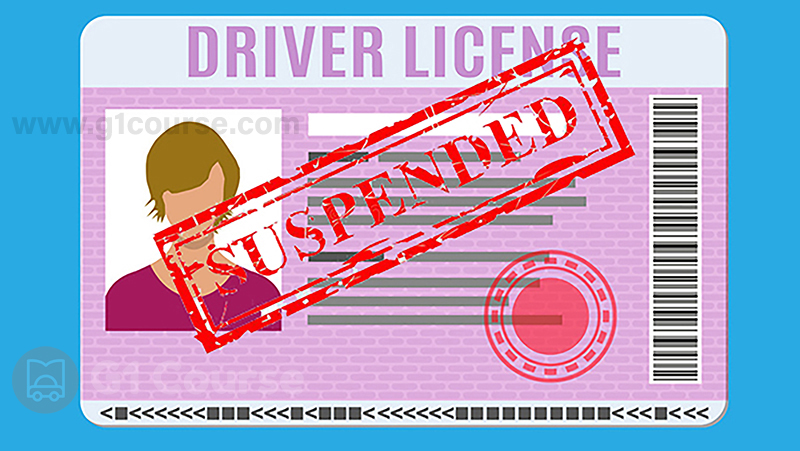
Seven
Ten
Five
Three
Correct!
Wrong!
Under all conditions, drivers should travel at a speed that will allow them to:
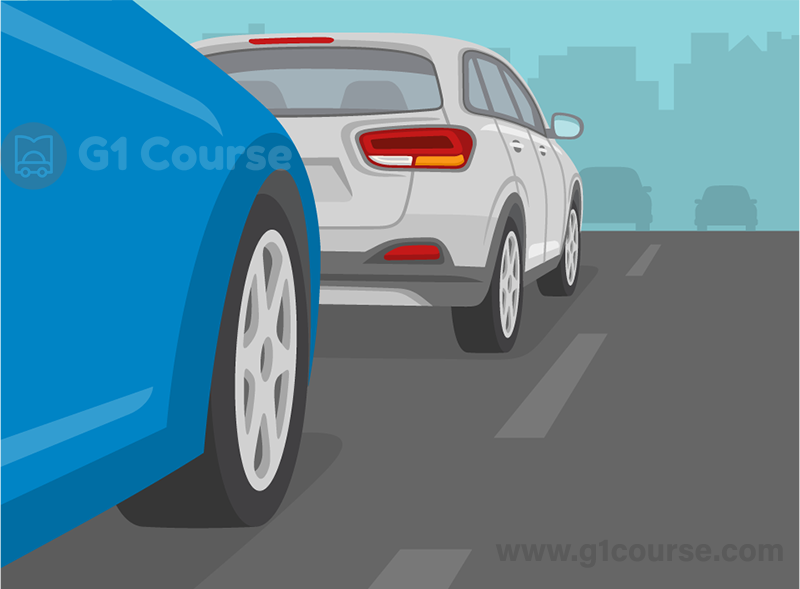
Stop within a safe distance
Stop within 90 m
Stop within 60 m
Stop within 150 m
Correct!
Wrong!
When a red “X” is indicated over a driving lane:
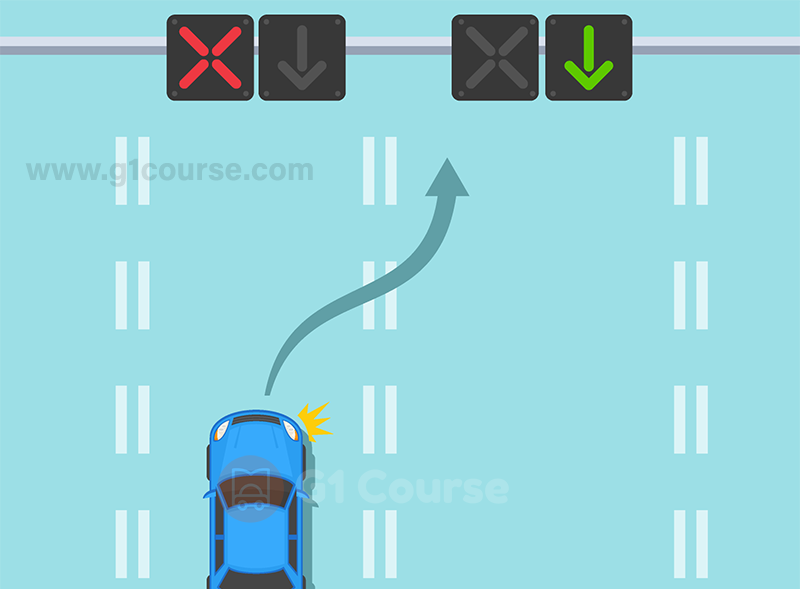
Drivers must not enter or remain in that lane
The red “X” applies only to pedestrians
There is a traffic light ahead
Drivers must stop immediately
Correct!
Wrong!
In good weather conditions, drivers are required to keep a safe distance behind the vehicle in front. Drivers should keep at least:
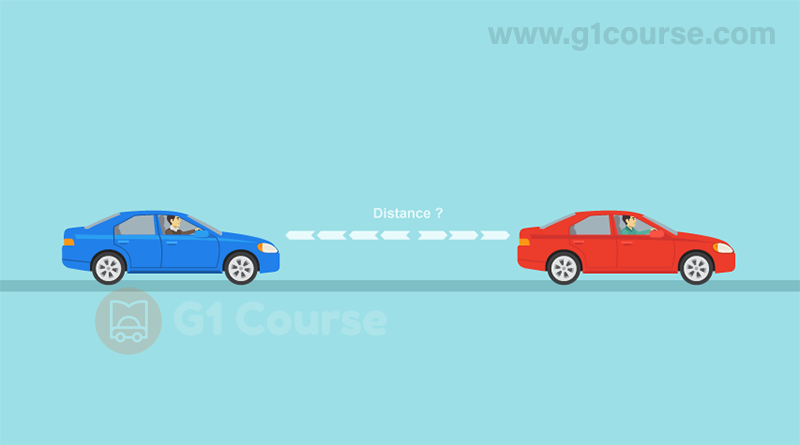
Two to three second’s distance behind the other vehicle
Seven car lengths behind the other vehicle
One second’s distance behind the other vehicle
Five cars length behind the other vehicle
Correct!
Wrong!
A _________ is an area that cannot be seen when looking at the vehicle’s rear and side view mirrors.
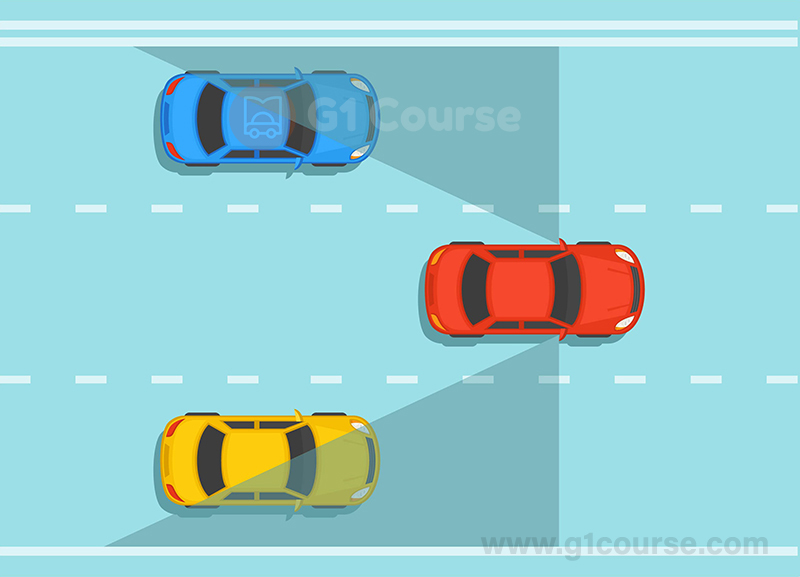
Blind spot
Danger zone
Safe zone
Dark area
Correct!
Wrong!
When should you use low-beam headlights at night?
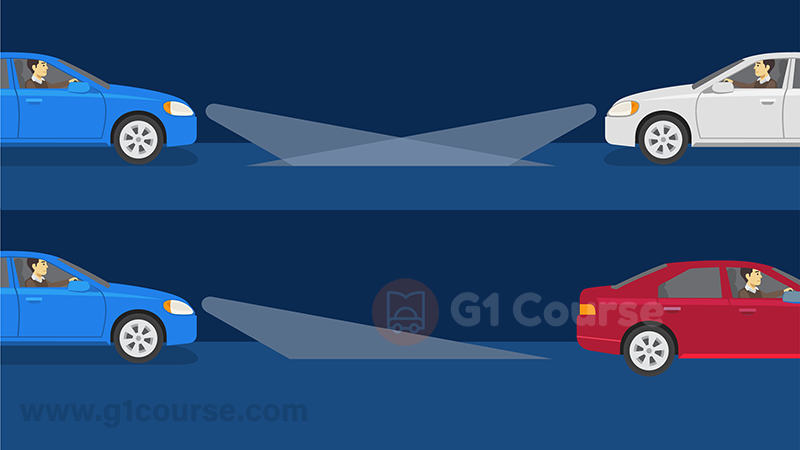
Approaching an oncoming vehicle or following another vehicle
Approaching an intersection
Another driver dims his lights
Blinded by the headlights of an approaching vehicle
Correct!
Wrong!
Drivers who fail or refuse to give a breath or blood sample when asked by police:
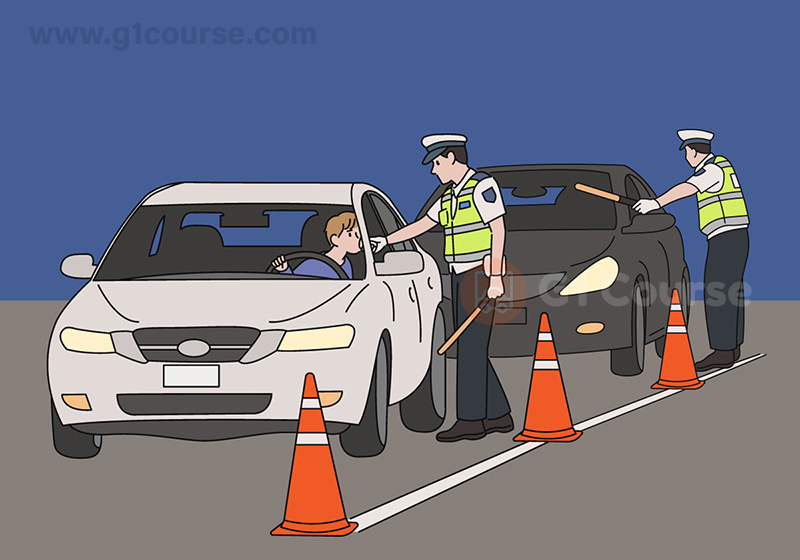
Will have their license suspended immediately for 90 days
Will have their license suspended immediately for 7 days
Will have their license suspended immediately for 30 days
Will receive a warning letter by mail
Correct!
Wrong!
If your wheels drop off the paved road and onto the shoulder of the road, you should:
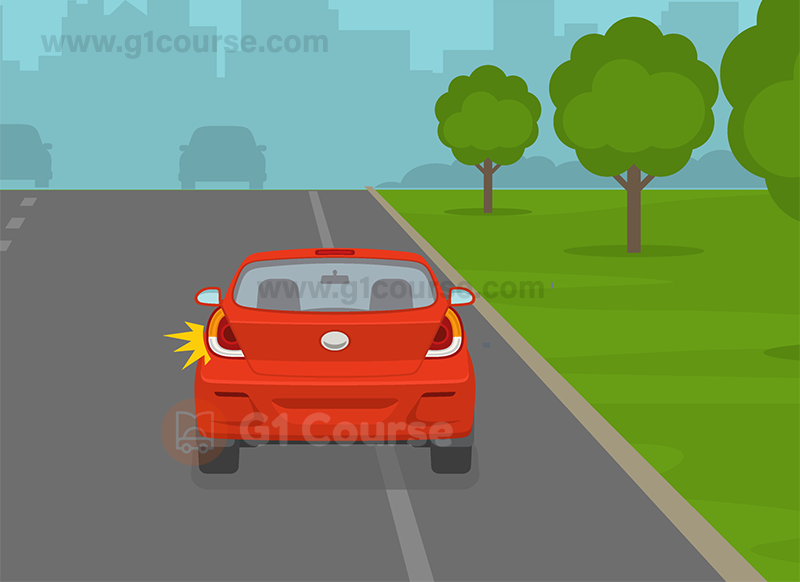
All of these
Grip the steering wheel firmly and avoid heavy braking
Release the gas pedal, allowing the vehicle to slow down naturally
Keep the vehicle under control and steer back onto the paved road
Correct!
Wrong!
Unless turning left or passing another vehicle, drivers should:
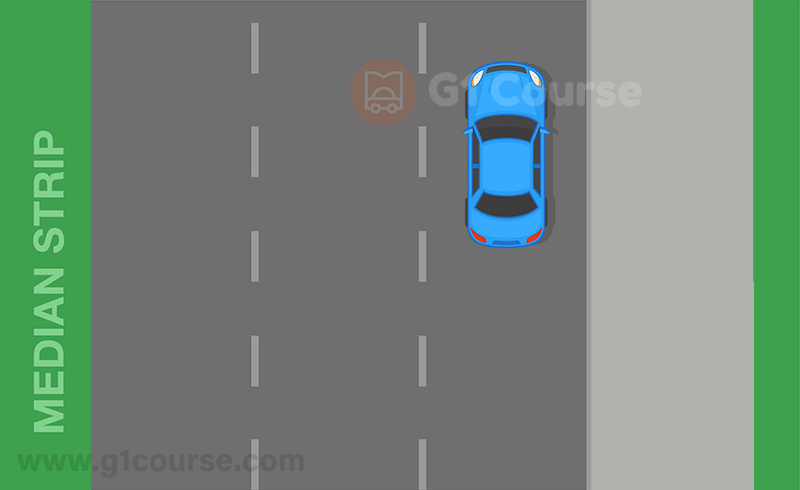
Keep to the right of the road or in the right-hand lane on multi-lane roads
Drive in the center of the roadway
Drive on the right shoulder of the roadway
Keep to the left of the road or in the left-hand lane on multi-lane roads
Correct!
Wrong!
How close can you park to a fire hydrant?
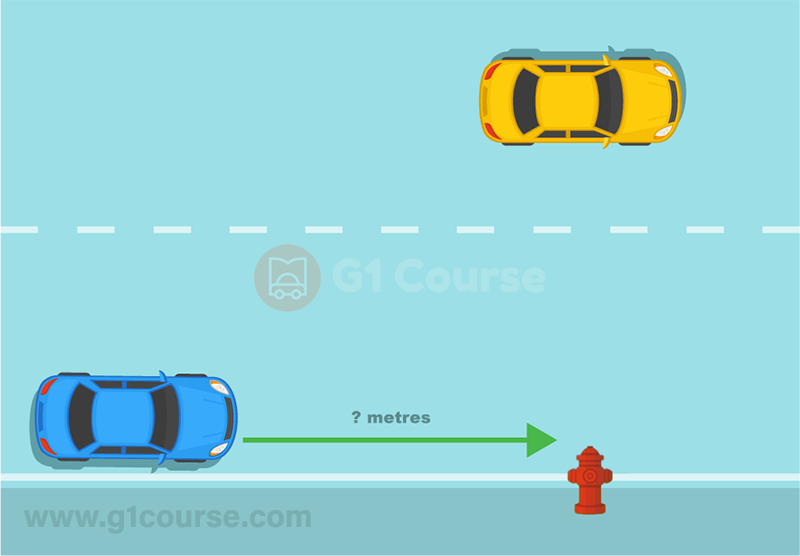
3 metres
5 metres
2 metres
6 metres
Correct!
Wrong!
If an approaching vehicle is using its high beams at night, drivers should:
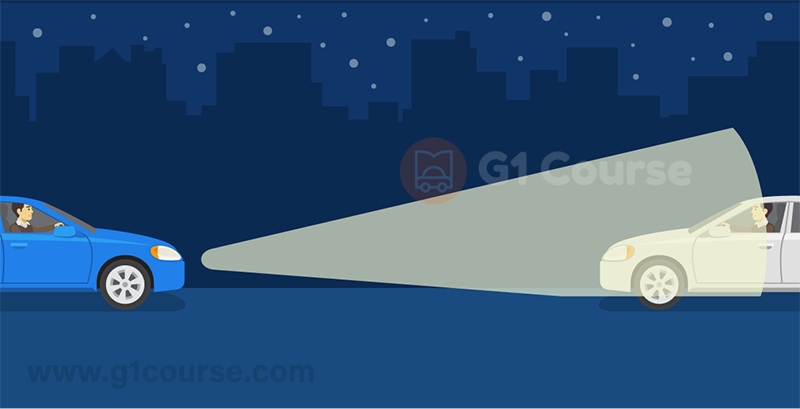
Look up beyond and slightly to the right of the oncoming lights
Open and shut their eyes continuously and rapidly
Look at the headlights of the approaching vehicle
Turn their lights on high beam as well
Correct!
Wrong!
What to do if you have a tire blowout?
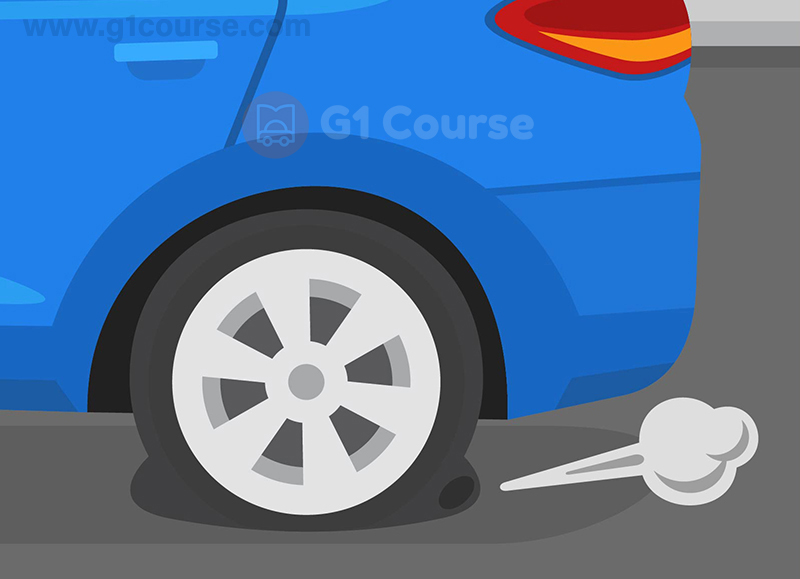
Release the gas pedal to slow down and steer the vehicle firmly in the direction they want to go
Apply the brake and steer to left
Apply the brake and steer to right
Brake quickly, as hard as the brakes are able to work
Correct!
Wrong!
Skidding is usually caused by the…?
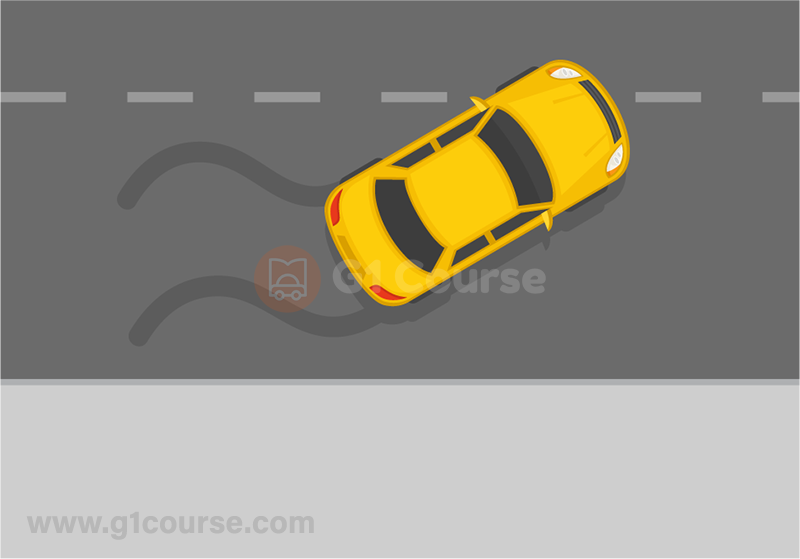
All of these
Hard braking
Accelerating too quickly
Driving too fast
Correct!
Wrong!
During poor weather conditions such as rain, snow, smoke and fog, which beam should headlights be on:
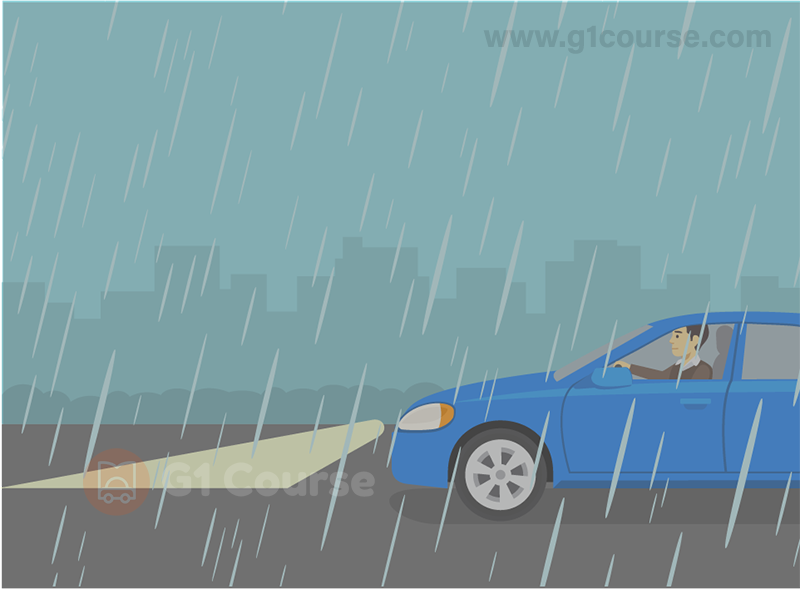
Low beam
It doesn’t matter, just have the headlights on
Headlights should not be used under these conditions
High beam
Correct!
Wrong!
What should drivers do when a car is waiting to allow a pedestrian to cross at a marked crosswalk?
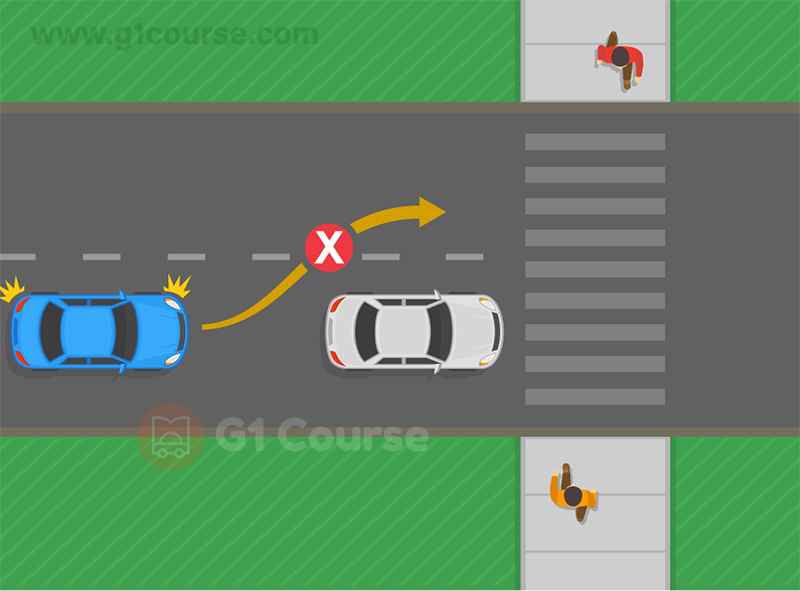
They should wait: drivers must not pass any vehicle within 30 m of a pedestrian crosswalk
They should pass to the left of the car
They should honk so that the car will drive on
They should pass to the right of the car
Correct!
Wrong!
How many days do new Ontario residents have to register their vehicles?
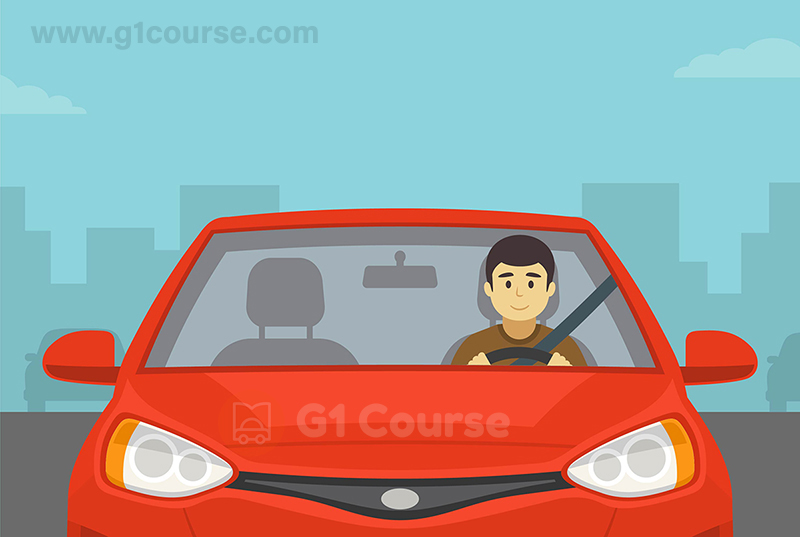
30 days
60 days
90 days
120 days
Correct!
Wrong!
Share the quiz to show your results !
Subscribe to see your results
G1-Rules3
I got %%score%% of %%total%% right
%%description%%
%%description%%
More Learning Options:
Loading…
ADVERTISEMENT
